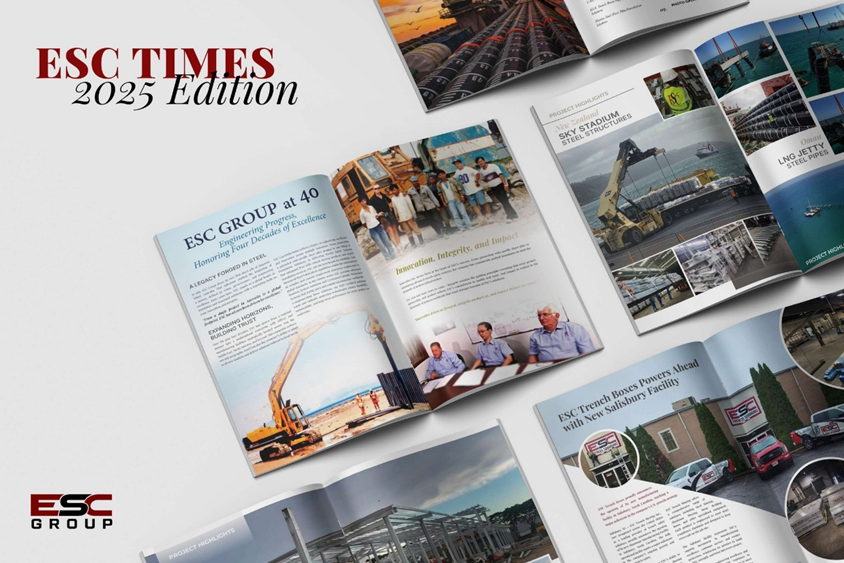An Overview of Trenching and Excavation Safety Guidelines by OSHA
- ESC Steel Engineering Sdn Bhd

- Jan 8, 2023
- 3 min read
Updated: Sep 23, 2023
Trenching is a type of excavation. It is the process of digging a hole in the ground to make a cavity for a certain purpose. Trenching is usually necessary for construction, installation and maintenance of underground utilities and structures such as gas, water, and telecom lines. Trenching excavations are possible with the use of manual tools or by using mechanical solutions and heavy machinery.
Excavation and trenching are amongst the most dangerous operations in the construction industry. Dangers can include cave-ins, falling loads, hazardous atmospheres, and hazards from using heavy equipment. To eliminate hazards and control risks, the US Occupational Safety and Health Administration (OSHA) has recognized the need to set up a standardized safety guidelines for excavation and trenching.
Below is a comprehensive guide for excavation and trenching safety as cited by US OSHA:
Trench Safety Measures
Trenches 5 feet (1.5 meters) deep or greater require a protective system unless the excavation is made entirely in stable rock. If less than 5 feet deep, a competent person may determine that a protective system is not required. Trenches 20 feet (6.1 meters) deep or greater require that the protective system be designed by a registered professional engineer or be based on tabulated data prepared and/or approved by a registered professional engineer.
Competent Person
OSHA standards require, before any worker entry, that employers have a competent person inspect trenches daily and as conditions change to ensure elimination of excavation hazards. A competent person is an individual who is capable of identifying existing and predictable hazards or working conditions that are hazardous, unsanitary, or dangerous to workers, soil types and protective systems required, and who is authorized to take prompt corrective measures to eliminate these hazards and conditions.
Access and Egress
Keep heavy equipment away from trench edges.
Identify other sources that might affect trench stability.
Keep excavated soil (spoils) and other materials at least 2 feet (0.6 meters) from trench edges.
Know where underground utilities are located before digging.
Test for atmospheric hazards such as low oxygen, hazardous fumes, and toxic gases when > 4 feet deep.
Inspect trenches at the start of each shift.
Inspect trenches following a rainstorm or other water intrusion.
Do not work under suspended or raised loads and materials.
Inspect trenches after any occurrence that could have changed conditions in the trench.
Ensure that personnel wear high visibility or other suitable clothing when exposed to vehicular traffic.
Protective Systems
There are different types of protective systems:
Benching means a method of protecting workers from cave-ins by excavating the sides of an excavation to form one or a series of horizontal levels or steps, usually with vertical or near vertical surfaces between levels. Benching is allowed in soil types A and B but not Type C.
Sloping involves cutting back the trench wall at an angle inclined away from the excavation.
Shoring requires installing steel or aluminum hydraulic/static shores or other types of supports to prevent soil movement and cave-ins.
Shielding protects workers by using trench boxes (trench shields) or other types of supports to prevent soil cave-ins. Designing a protective system can be complex because you must consider many factors: soil classification, depth of cut, water content of soil, changes caused by weather or climate, surcharge loads (e.g., spoil, other materials to be used in the trench) and other operations in the vicinity.
Workers’ Rights
Workers have the right to:
Working conditions that do not pose a risk of serious harm. Receive information and training (in a language and vocabulary the worker understands) about workplace hazards, methods to prevent them, and the OSHA standards that apply to their workplace.
Review records of work-related injuries and illnesses.
File a complaint asking OSHA to inspect their workplace if they believe there is a serious hazard or that their employer is not following OSHA’s rules. OSHA will keep all identities confidential.
Exercise their rights under the law without retaliation, including reporting an injury or raising health and safety concerns with their employer or OSHA. If a worker has been retaliated against for using their rights, they must file a complaint with OSHA as soon as possible, but no later than 30 days.
ESC Trench Shoring, Inc. has been providing excellent solutions for trench shoring projects around the world. ESC’s poll of engineering and technical teams are well trained experts in various fields that are always ready to serve its global clients providing an effective, economical, and safe trench shoring technology.
ESC has innovated and fully developed its Trench Shield Series (also known as Trench Boxes) a two-sided, high-quality, and economical excavation support system that provides a safe working environment in trenches up to 40 feet deep.
ESC offers trench shields that are durable and manufactured in compliance to OSHA Standards and are certified by third party engineering professionals in accordance with the guidelines and recommendations set by the North American Excavation Shoring Association (NAXSA) to meet local and international standards.









